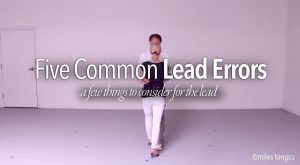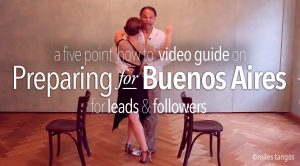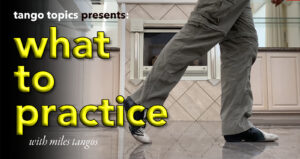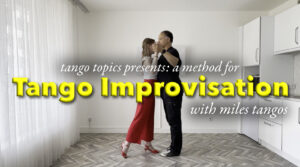



Buenos Aires for a lot of people, is their trip to Mecca. It is mythological. It is magical. It is the next logical step in their evolution. In their mind they have seen the videos of dancing at <a class="glossaryLink

Today when I’m working with a student, they honestly don’t want to do that kind of work. They just want the answers. “How do I …?” so I show them what to do, and then how to do it. But that starts with going right back to their <a class="glossaryLink

The Tango Topics Method of Tango Improvisation uses extensions, dissociation/applied dissociation, and individual component movements, as well as Beat and the 5 Pause Types as the building blocks for generating a type of improvisation that can be combined with contemporary


What is ‘Follower Technique‘? In its simplest form, it is a series of skills that when put together create a ‘dancing platform’ for the Follower. This is a platform that the Follower builds into their body through painstaking, detailed, carefully

As Leads, there are many issues that we need to address and then redress, and then revisit several million times over and the reason is that while we may believe (operative word in the sentence) that we’re leading X, Y, or Z, the reality is far from that. Usually. It’s

Realistically there are a few sources of information about this stuff, but honestly most of them are done in a performance OR are missing the requisite detail of the HOW you set up a Follower Back Sacada or more importantly the underlaying technique that is frequently not discussed at all.

The Sacada is probably one of Tango’s more interesting pieces of Tango vocabulary. Mostly because it looks really cool and complicated. And yet it’s complexity can be explained in one simple sentence – It’s an illusion! The illusion is an intersection of walking techniques. The Lead’s walk intersecting the Follower’s.